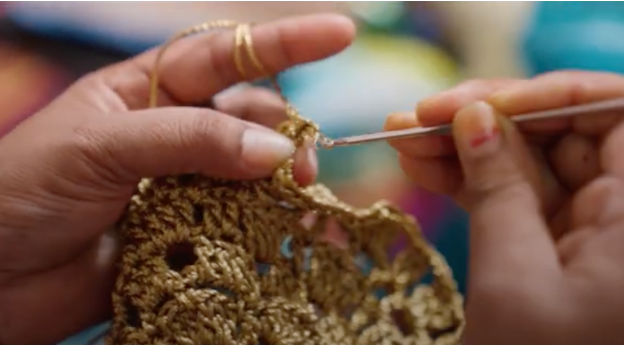The Future Of Food: How Technology Is Changing The Way We Eat
Sep 16, 2023 | Devashish Prajapat
 In a vibrant world where technology and people converge, a remarkable transformation is beginning to embark on innovation and reshape the way we live our lives. Standing at the intersection of retail technology and service to consumers, we find ourselves pondering two dilemmas – the scientific balance of anthropomorphism in technology and efforts to define how we think about food bugs.
Imagine a world where smiling virtual assistants and human robots guide us through labyrinthine paths, where machines follow our content. At the same time, consider cooking beyond traditional boundaries, where insects – something often hated – have emerged as a solution to global problems. In this astonishing way, we examine the relationship between people and technology, discovering where technology is for consumers like humans. We are also ready to tackle line dissatisfaction and explore new business ideas that can make dirty customers genuinely curious.
In a vibrant world where technology and people converge, a remarkable transformation is beginning to embark on innovation and reshape the way we live our lives. Standing at the intersection of retail technology and service to consumers, we find ourselves pondering two dilemmas – the scientific balance of anthropomorphism in technology and efforts to define how we think about food bugs.
Imagine a world where smiling virtual assistants and human robots guide us through labyrinthine paths, where machines follow our content. At the same time, consider cooking beyond traditional boundaries, where insects – something often hated – have emerged as a solution to global problems. In this astonishing way, we examine the relationship between people and technology, discovering where technology is for consumers like humans. We are also ready to tackle line dissatisfaction and explore new business ideas that can make dirty customers genuinely curious.
Join us as we explore unknown lands and challenge preconceived notions, starting with AI's funniest response to cooking with online ingredients. Join us on a journey that explores the frontiers of technology and the cutting edge of food, a journey that empowers people with potential and the potential to achieve excellence. Welcome to a conversation that sparks curiosity, connects, and leads to transformative supporters – conversations that can redefine our vision for selling and food on our plate.
In an age where technology is seamlessly integrated into our lives, the concept of anthropomorphism is at the forefront of innovation. When we interact with machines that seem to understand, understand, and even reflect our own behavior, the question arises: How human are these technologies really? Do we make good friends or do we feel uncomfortable near the valley of evil? At the same time, our plans have become information for food research, forcing us to rethink the materials we consume. The emergence of food series as a sustainable alternative is causing us to rethink what we eat. However, social dissatisfaction and cultural concerns cast doubt on these options.
We started the adventure twice in the way of preparation and taste. We explore the psychology that maintains our relationship with the Oneness, we explore the psychology that exposes us to algorithms and algorithms to us. At Gastronomy, we present the art of transforming insects, an ancient food source, into sensuous desserts. Through these pages, we invite you to question your thoughts and arouse your curiosity. We examine the fine line between novelty and discomfort, where technology becomes almost human and bugs become harmless. Join us as we unravel the mystery of the conflict in consumer technology and uncover strategies that have the potential to transform the food chain from isolation to recognition.
Let's bring together the conversation that goes beyond the standards, redefining the connection between the known and the unknown, and redefining not only how we cook and eat, but also how we see the world around us. The future is a land of possibilities and we invite you to take the first step with us by exploring little by little unexplored areas and human interactions.
Part 1: Anthropomorphism in Customer-Oriented Retail Technology
The Psychology Behind Definition of Anthropomorphism in Retail Technology: The Bridge Between Human and Machine
● Anthropomorphism, the attribution of human-like traits to non-human organizations, has been compelling in the following. home: shopping technology for shoppers.
● As we traverse the spectrum of anthropomorphism, from friendly chatbots with human access to even humanoid robots guiding us, we find that human nature is the most important factor in creating humans. Counterbalance is an art that depends on the impact of content and the emotional resonance that technology can affect.
Communication: Why Anthropomorphism Matters
● The deep psychology behind our love for anthropomorphic retail technology. Our brain makes connections with associations that convey familiarity and lead to comfort and confidence.
● A friendly greeting or meaningful conversation can strengthen the emotional bond and make it easier for users to seek help. However, the journey to perfection is not without its challenges, as being too human can lead to discomfort, an eerie realm of the uncanny valley.
Design User-Centred Anthropomorphism: Combining Functionality and Perception
● User-centred design is closely related to product design in retail. Virtual conversations help bring a personal touch to shopping. These AI friends understand our preferences, answer our questions, and make decisions easier.
● Humanoid robots, on the other hand, use their physical bodies to guide customers and enhance interactions. The combination of performance and impact paves the way for effective collaboration and sales.
Part 2: Reducing consumer aversion to insect food
Uncovering the unusual: Marketing insect food
● In this world of sustainability problems, insect food has emerged as a solution, it provides a lot of protein and is environmentally friendly. However, overcoming the first impression is still a major challenge. Through marketing strategies, we can initiate the change process that turns stigma into acceptance.
Transformative Education: Introduction to Health and Environmental Services
● The path to nutrition begins with knowledge. Educating consumers about the nutritional value and environmental impact of insects is a powerful tool to clear up misunderstandings. By demonstrating the protein, vitamin, and mineral content in these small animals, we encourage consumers to make informed choices for their own health and the well-being of the world.
Cooking Alchemy: Making Sweet Meal Lines
● Kitchen changes play an important role in changing perceptions. Thanks to new recipes and creative tips, we can turn the line into an interesting attraction. Pairing familiar flavors with traditional ingredients and incorporating them into favorite dishes can help bridge the gap between the exotic and the modern.
Collaboration: Packaging and Experience
● The visual and tactile elements of food packaging are important in establishing consumer needs. Well-designed packaging can emphasize the quality and environmental friendliness of the product, subconsciously changing people's behavior. Taste and texture perception also play an important role. By producing food on the go, we encourage diners to have fun and break down preconceived notions.
Through Culture: Cultural Dialogue and Cooperation Influencing
● Cultural awareness is a powerful tool for normalizing food. By showing that insects are an essential part of many foods around the world, we include them in natural and reputable ingredients. Also, the impact of health chefs and food lovers should not be underestimated. Their creativity and culinary skills can engage visitors and encourage re-evaluation of food groups.
Part 3: The Best of Anthropomorphism
At the Best of Science: Anthropomorphic Genealogy
● Anthropomorphism is not a one-size-fits-all concept. Different retail environments require different levels of human-like features. High-end retailers can take advantage of interactive AI assistants, while grocery stores will prefer more functionality and efficiency. Finding the sweet spot between machine performance and human interaction is key to improving the user experience.
Familiarity Brings Comfort: Success Case Studies
● Real-life success stories demonstrate the power of anthropomorphism. AI-powered chatbots like old friends or humanoid robots guide tourists through the airport. These examples show that the human touch can build trust and ultimately influence purchasing decisions and trust by encouraging positive interactions.
Part 4: Turning Frustration into Happiness: Food Line Marketing
Psychological Strategies for Culinary Improvement
● Consumer dislike for food lines is psychological and is influenced by behavioral culture and personal knowledge. Changing perceptions requires a nuanced approach to solving psychological problems. By leveraging cognitive dissonance, we can drive awareness and acceptance by encouraging customers to reconsider their complaints.
Enhance the flavor with culinary creativity
● Culinary tricks are the key to turning raw ingredients into edible food. From high-protein crickets to whole wheat pasta, novelty turns into curiosity. By combining insects in familiar dishes and harnessing their texture and flavor, we open up a new world of culinary exploration.
Sensory Seduction: Together
● In the world of food, sight and hearing are the best. Well-designed packaging can draw attention from the main food chain.
● Additionally, creating the most unique experience, from the delight of cricket slices to the rich umami flavor of umami, makes cooking fun and encourages customers to embrace new ones.
Merging in Multiculturalism: Culture and Cooperation
● Culture has a great influence on cuisine choices. We demonstrate the long-term role of insects in the cuisines of the world by introducing the consumption of insects in different cultures, from chagrin in Mexican cuisine to fried silkworms in Thailand. Collaborations with gourmet chefs and influencers provide a platform to showcase avant-garde food as surprising food.
RESULTS
In the emerging retail technology and culinary research environment, the dance of anthropomorphism and the food line exemplify the nature of human adaptation. As we explored the world of technology and flavor, we discovered that only the value of human interaction can create a memorable purchase. Similarly, by embarking on a culinary journey that transcends taboos and embraces innovation, we unlock our potential to improve our relationship with food and the planet. The intersection of anthropomorphism and culinary evolution takes us into uncharted territory, enabling us to see the world through a lens that blurs the lines between familiar and divergent movement.
ILLUSTRATION




Conclusion
Recommended








